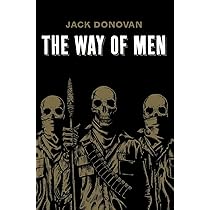Chapter 32 — A Nation in a Hurry
byChapter 32 — A Nation in a Hurry begins with a telling comparison between American life and that of Europe. Returning home after time abroad, one is immediately struck by the heightened tempo of daily life in the United States. From the bustling activity on the docks to the way people rush their meals, the national obsession with speed is unmistakable. It permeates everything—how business is done, how people talk, even how they relax. The story about steamboat captains placing someone on the safety valve to gain speed becomes a fitting metaphor for this relentless drive. In a nation where time is treated as a commodity, there’s little patience for slowness. Even the simplest of tasks are performed with urgency, as if life itself is a race with no finish line.
The chapter points out how this obsession with acceleration has deeper consequences beyond mere inconvenience. Quality is often sacrificed for speed, whether in the assembly of products or the way people absorb information. Meals are swallowed rather than savored. Conversations are clipped. Businesses operate on thin margins of attention, prioritizing volume and velocity. Social events, once intended for connection and reflection, now resemble sprints toward the door. Ironically, the pursuit of efficiency often results in diminished returns—less satisfaction, less clarity, less beauty in the moment. The author presents this as a modern paradox: people are busier than ever, yet they feel increasingly unfulfilled.
There’s an unsettling suggestion that this cultural current is self-perpetuating. People complain about the rush, yet participate in it without resistance. The pace is so ingrained that any deviation feels unnatural or lazy. The rich, who should have time to relax, suffer just as much—perhaps more—since their status demands constant motion and visibility. Technology and industrialization have contributed, but the root lies in a national ethos that prizes productivity above all. There’s an implied loss here—not just of calm, but of identity. A society that always runs has little time to reflect on why it runs, or where it is headed.
Amid this landscape of unrelenting urgency, the author introduces a quiet call to reclaim a slower rhythm. Drawing from historical examples, he paints a picture of a time when people walked with purpose but not haste, when letters were written with care, and meals were family events rather than refueling stops. This wasn’t just nostalgia—it was an argument for a fuller, richer way of being. The message is not to reject progress but to reintroduce mindfulness. Without deliberate pauses, life becomes mechanical, and humanity is reduced to its functions rather than its aspirations.
By placing the blame not on individuals but on a broader social pressure, the chapter maintains empathy. People aren’t necessarily choosing to live this way—they’re swept into it by expectations, by deadlines, by the invisible current of culture. It’s a shared affliction, and therefore, a shared opportunity for change. Choosing to slow down, to prioritize depth over speed, becomes an act of personal and civic resistance. It means reclaiming attention, presence, and joy in a world too often driven by the next checkbox. This reflection invites readers to pause and reconsider their daily choices—not to escape the world, but to engage with it more fully.
The final image of Americans rushing forward like a steamboat at risk of bursting is both humorous and tragic. It captures a society that values momentum over sustainability, motion over meaning. To run full steam ahead may feel exhilarating, but without direction or rest, it’s a path to burnout. This metaphor lingers as a warning and a prompt: is all this speed worth the cost? The chapter leaves readers with that question, urging them not just to observe the tempo of their lives, but to choose it with intention. In doing so, they might find that slowing down isn’t a weakness, but a strength—a way to rediscover the purpose behind all the motion.

